Members' Lounge
Welcome to the ‘Ghislaine Howard Collection’ at Elliot House, home of Greater Manchester Chamber of Commerce.
The rooms on the first floor are open to visit as is the space on the second floor. If not in use, the four rooms on the ground floor may also be visited.
From 12pm to 5pm on the last Friday of the month, all the spaces in the Chamber are open to visitors.
We hope that you enjoy your visit. For further information or for any enquiries regarding the work, please contact Ghislaine on: info@ghislainehoward.com
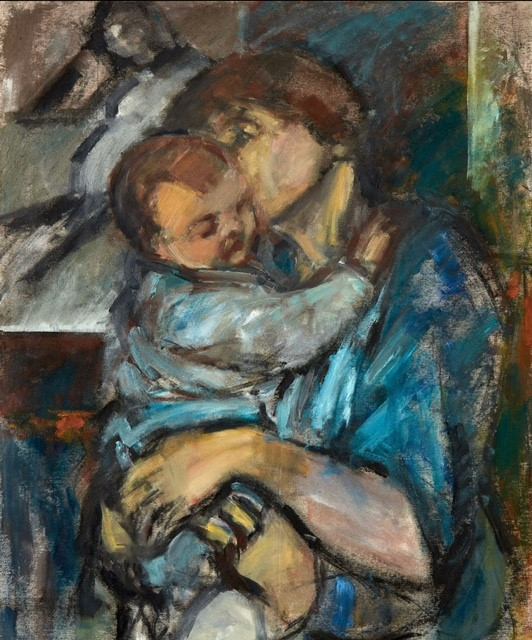
1. Self-Portrait with Max
This is one of my very favourite paintings, made from a glimpse caught in the studio mirror as I hugged my son. I made a rapid sketch from which more considered drawings followed - the final study is in the collection of Manchester Art Gallery. In the background is a reference to my Pregnant Self-Portrait that can be seen on the second floor of this building.
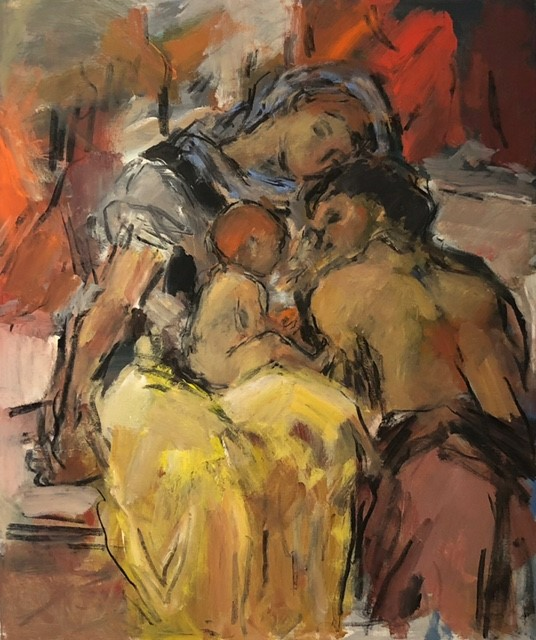
2. Study of family group from Frederic Lord Leighton’s Captive Andromache, completed 1888. Leighton has included this happy family group who are completely oblivious to the solitary figure of Andromache who stands ignored (or merely a figure of curiosity) by the people who surround her.
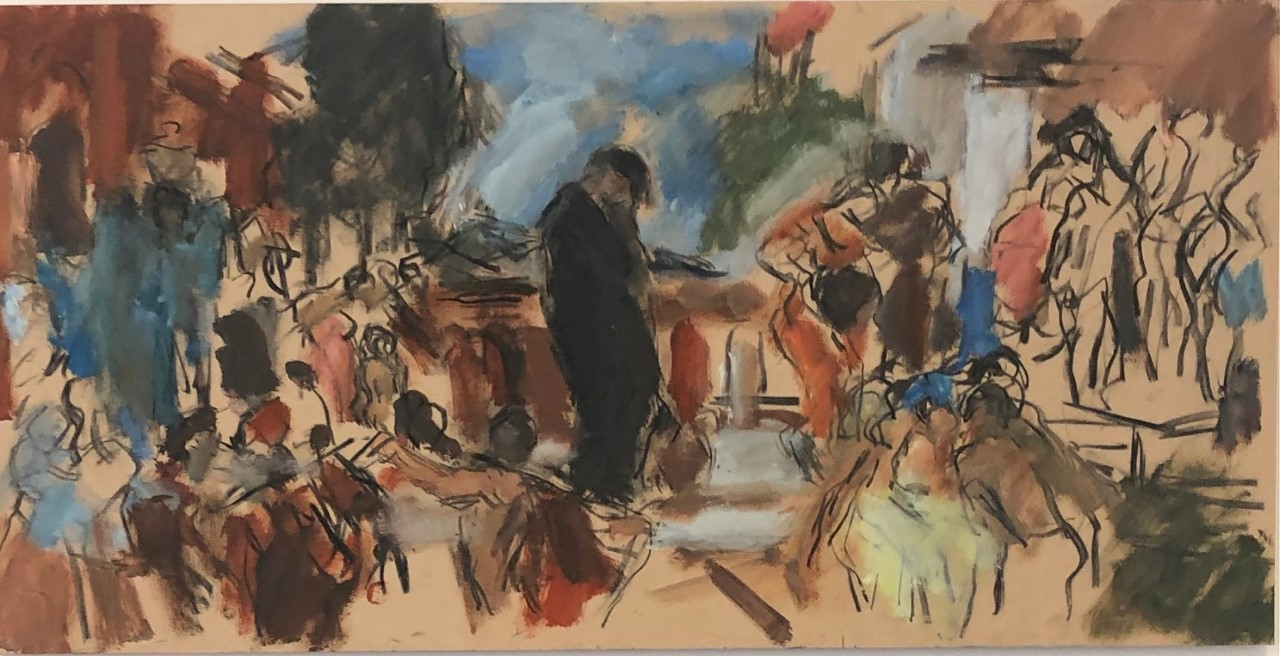
3. Preparatory study of Captive Andromache
Painted at speed to help me consider the colours, major rhythms and movements of Lord Leighton’s painting.
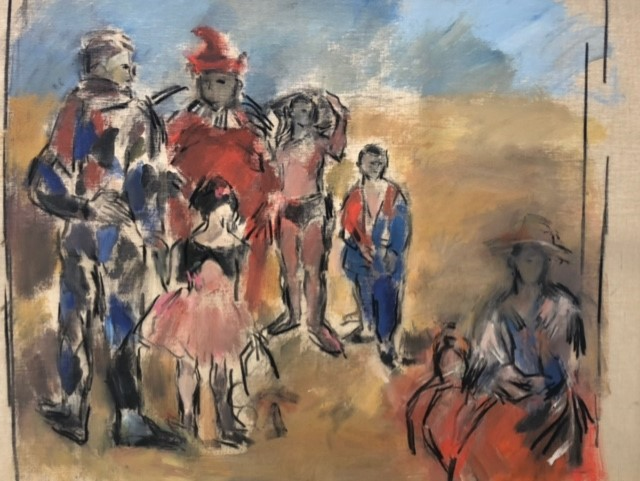
4. Family of Saltimbanques, (after Picasso)
Family of Saltimbanques is a response to Picasso’s 1905 painting of the same name. It was the first of his self-conscious attempts to paint a masterpiece. He succeeded. Saltimbanques were the very lowest form of entertainers - they travelled from town to town, village to village, performing wherever they could, market places or street corners before being hurried on to their next place of temporary refuge. This painting inspired the Austrian poet, Rainer Maria Rilke, who for a time, lived in the castle where it hung. It inspired some of his greatest lines:
‘But who are they, these Travellers, even more, transient than we are ourselves, who urgently, from their earliest days, are wrung out for whom – to please whom, by a never-satisfied will?’
From Rilke’s ‘Fifth Duino Elegy'
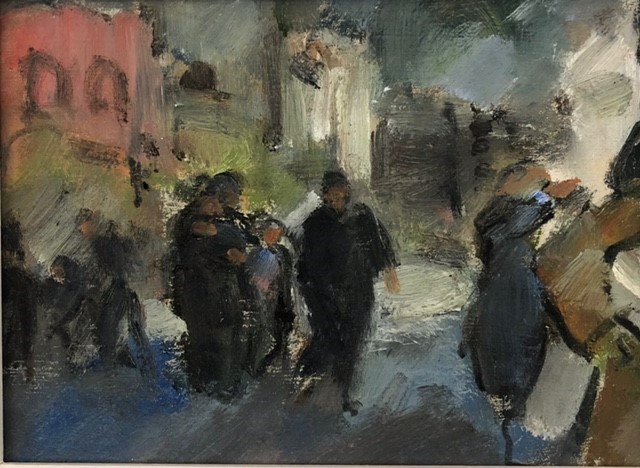
5. Panel from the 365 Series
Looking through the collection of the daily paintings to include in this display I came cross this one that mirrors Leighton’s painting in an unexpected and uncanny way: the single silhouetted figure in the centre of the composition, the buildings that flank that figure and the people hurrying by, even the architectural forms, all recall Captive Andromache. A chilling and timely reminder that Homer’s epic poem and Leighton’s beautiful painting and all that they suggest still resonate with meaning today.
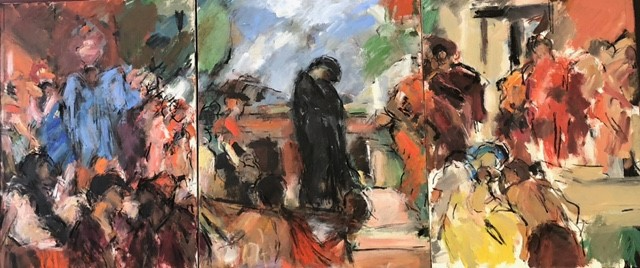
6. Three panel study of Captive Andromache.
Alan Bennett says it beautifully in his play The History Boys. ‘Now you have it, set down by someone else, a person you have never met, someone who is long dead. And it is as if a hand has come out and taken yours.’
I have used the word conversation to describe my engagement with Lord Leighton’s masterpiece because that’s precisely what it has been - and may well continue to be, once these separate canvases return to my studio.
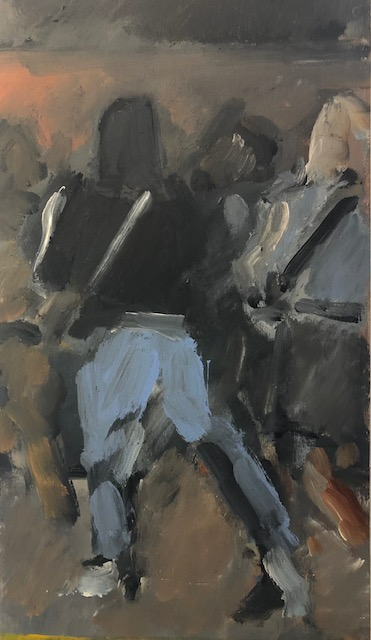
7. Figure in a Black Hoodie: Seen from the Chamber
A rapid response to figures walking down Deansgate seen from the vestibule of Elliot House.
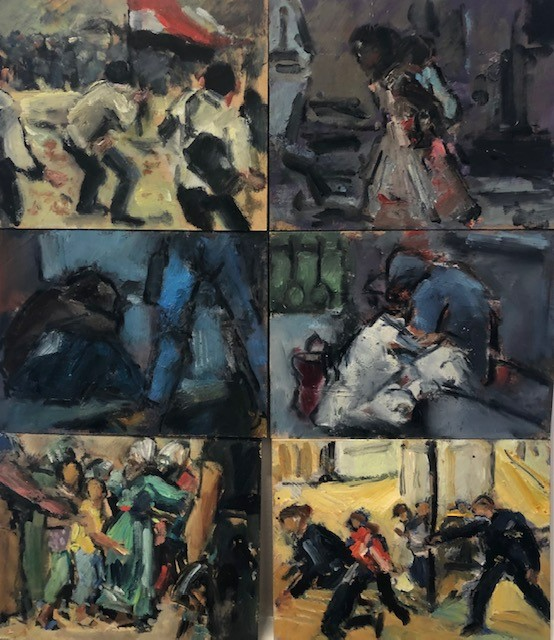
8. Selection of panels from the 365 Series
A group of small studies that I paint on a daily basis from the news media.
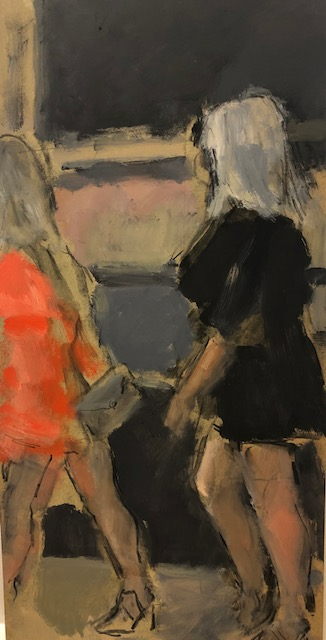
9. Walking Figures, seen from the Chamber
More figures walking down Deansgate seen from the vestibule of Elliot House.
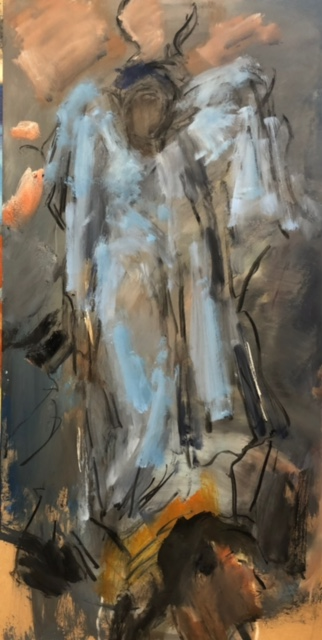
10. Woman in Blue, study from Captive Andromache
Exploring a really great painting reveals not only what the artist achieved, but also, perhaps, some of the things that were lost as the painting reached its final state. Leighton’s early studies have a sense of movement and inner life that has not survived into the finished painting. Re-imagining the individual figures and painting at great speed and with a certain amount of freedom is a way to re-capture something of the vitality of his initial sketches.
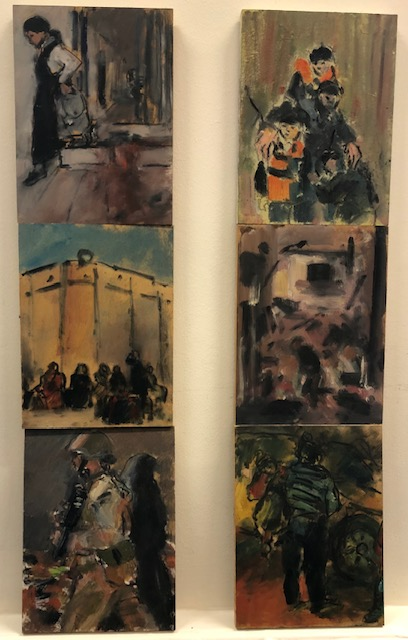

11. Selection of panels from the 365 Series.
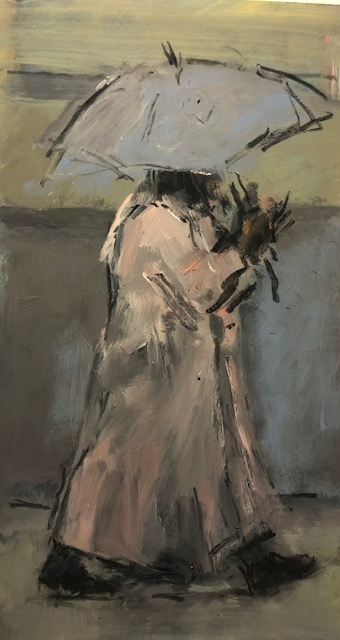
12. Woman with an Umbrella: Seen from the Chamber
I was captivated by her concentration balancing her umbrella and mobile phone and a very animated conversation.
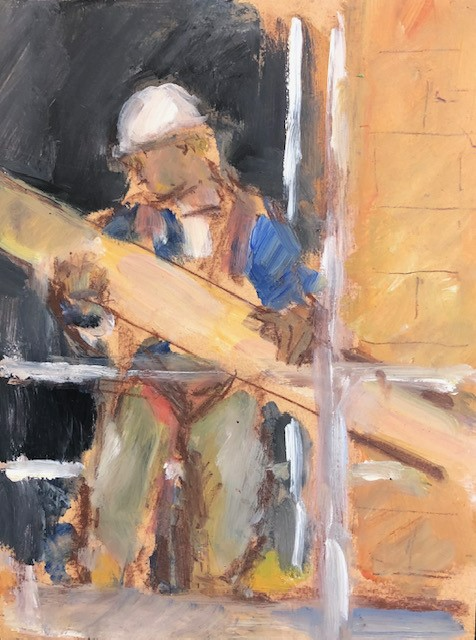
13. Scaffolders 1
Two studies made during the renovation of an old cotton mill that lies on the other side of Glossop Brook from our home. I found myself fascinated by the grace and fluidity of the men's movements as the scaffolding rose up out of the water. It was quite amazing to see figures from so many of my favourite Renaissance paintings and sculptures spring to life before my eyes.
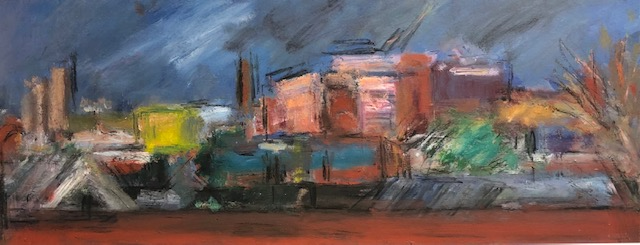
14. Approaching Piccadilly
Painted from a quick sketch made as my train paused before moving on into Piccadilly Station. The destruction and re-building of Manchester goes on apace and brings to mind the famous poem by Charles Baudelaire, published in 1860 and written in response to a sudden realisation that fell upon him as he walked from the narrow streets of old Paris and into the flash quarters of the new Paris soon to be made famous in the paintings of Manet and the Impressionists. The realisation? That he felt that he had become a stranger in his own city, exiled from his own past life and the memories that the familiar buildings, now demolished, evoked in his thoughts. As he thinks, he remembers another exile, celebrated by Homer in his epic poem the Illiad written over 3000 years ago.
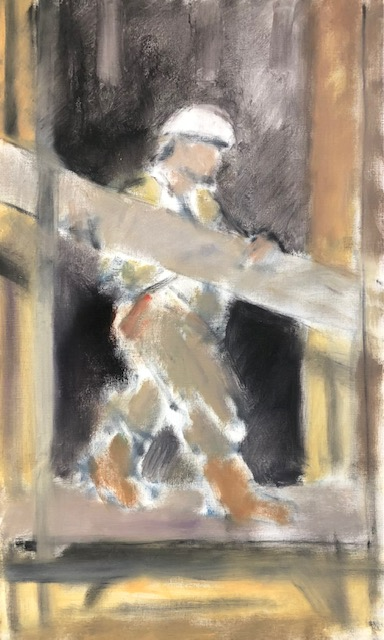
15. Scaffolders 2
Two studies made during the renovation of an old cotton mill that lies on the other side of Glossop Brook from our home. I found myself fascinated by the grace and fluidity of the men's movements as the scaffolding rose up out of the water. It was quite amazing to see figures from so many of my favourite Renaissance paintings and sculptures spring to life before my eyes.
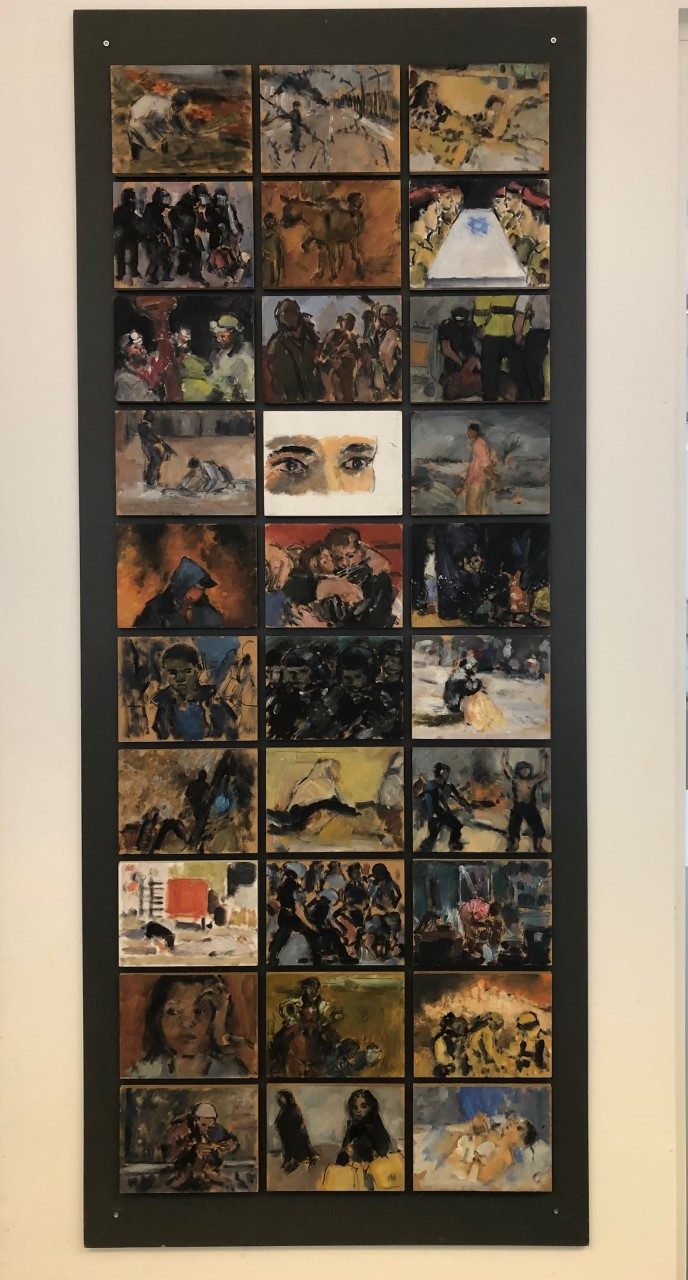

16. Panel of ‘365' paintings
One of the twelve panels that were exhibited at Imperial Museum North; each held 30 works to signal a notional year of news reportage.
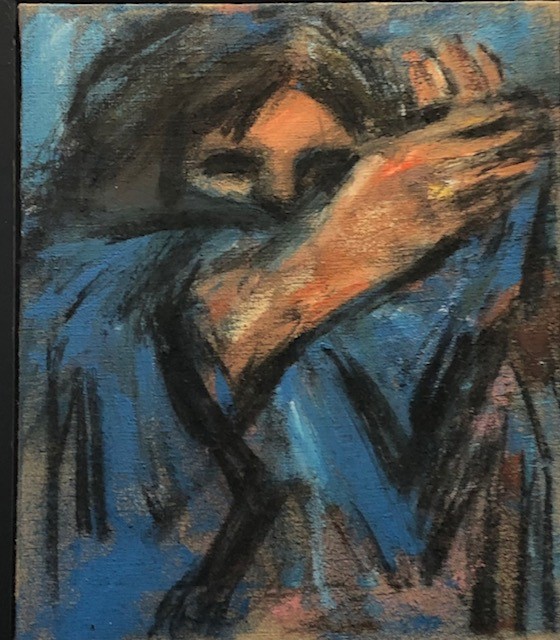
17. Rehearsal study from The Women of Troy, by Euripedes, National Theatre 1
In the mid 1990s I was invited by the theatre director Annie Castledine to make drawings and studies during rehearsals for her production of this renowned Greek tragedy. I was very taken with the actors’ telling gestures, covering their faces with their hands or their clothes - the only means of expressing their defiance in the face of unprovoked aggression.
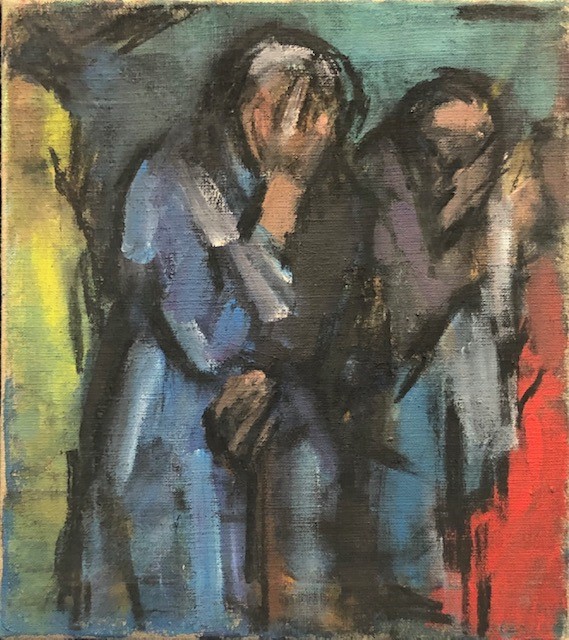
18. Rehearsal study from The Women of Troy, by Euripedes, National Theatre 2
In the mid 1990s I was invited by the theatre director Annie Castledine to make drawings and studies during rehearsals for her production of this renowned Greek tragedy. I was very taken with the actors’ telling gestures, covering their faces with their hands or their clothes - the only means of expressing their defiance in the face of unprovoked aggression.

